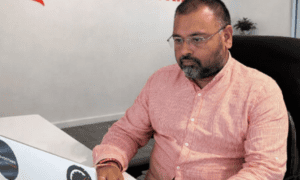Profit First is a business money system created by Mike Michalowicz. It changes the old way of thinking about income and profit. The method says that every business should take profit first and spend what remains. It helps owners manage cash clearly and simply, which builds long-term stability.
Many finance experts and business analysts support the Profit First method. Studies show that when small firms separate money into clear accounts, they reduce waste and debt. Scholars note that this plan uses human behavior to build discipline in spending. Research from financial journals adds that companies using Profit First grow profits faster because they plan before spending.
Profit First is more than a system; it is a mindset shift. It teaches control, clarity, and confidence in business cash flow. With each deposit, owners feel a sense of progress and power. Step by step, profit becomes a habit, not a hope. This change can turn a struggling business into a stable and rewarding one.
Why Profit First works
The system uses psychology. Owners feel pressure to spend everything that sits in a single account. Profit First splits revenue into multiple accounts. Each account has a clear purpose. Owners move fixed percentages into these accounts on each deposit. The routine creates discipline. It brings clarity about cash. It reduces waste. It makes profit non-negotiable.
Core pieces of the system
First, set up separate bank accounts. Typical accounts include Income, Profit, Owner’s Pay, Taxes, and Operating Expenses. Next, choose Target Allocation Percentages (TAPs). TAPs define how much of each deposit goes to each account. Then, transfer money on a schedule. Many owners do this twice a month. Finally, use profit distributions as rewards; keep taxes safe; pay owners fairly; limit operating spending. This structure simplifies decisions. It reduces month-end panic.
Target Allocation Percentages (TAPs) made simple
TAPs vary by business size and stage. A new firm may start with low profit TAPs; an established firm aims higher. Common starter splits look like this: Profit 5%, Owner’s Pay 50%, Taxes 15%, Operating Expenses 30%. Many businesses adjust those numbers over time. Revisit TAPs every quarter. Use real revenue numbers; do not guess. Sources that track TAPs show ranges for each account by business type.
Step-by-step setup
- Open five accounts at one bank.
- Label each account clearly.
- Deposit all sales into Income.
- On deposit days, move money based on TAPs.
- Use Profit for quarterly distributions.
- Keep Taxes aside for obligations.
- Force operating teams to live within the OpEx account balance.
These steps remove friction. They make bookkeeping easier. They reveal true affordability.
Practical tips for small business owners
Start small. Pick conservative TAPs. Track cash weekly. Move money even when revenue drops. Tighten OpEx first; avoid cutting Owner’s Pay unless necessary. Use ACH transfers to automate the moves. Keep at least one safety cushion in the OpEx account. Review actual percentages after three cycles. If profit remains low, lower OpEx target; raise Profit slowly. These moves build habit without shock.
Benefits that matter
Profit First creates predictable profits. It reduces surprise tax bills. It forces owners to pay themselves. It reveals inefficiencies fast. It increases business value when owners want to sell. Readers report clearer cash flow and better decisions after implementation. Credible business writers list Profit First among the top practical finance books for owners.
Common objections and answers
Some owners say the system feels tight. That reaction happens on purpose. Scarcity drives creative choices. Another worry: small margins cannot support splits. Solution: start with micro-TAPs; increase profit slowly. A final worry: banks may charge fees for multiple accounts. Solution: Use one bank with free business accounts; consider online banks that support many accounts without fees. Accountants give mixed feedback; many praise behavior change while urging careful tax planning.
When Profit First does not fit
High-growth startups that rely on reinvested capital may not suit Profit First early on. Firms selling high-margin products with volatile seasonal cash flow need guardrails to avoid bankruptcy. Profit First shines in service firms, small retailers, and steady local businesses. Match the method to your business model before full adoption.
How to measure success
Track simple KPIs. Measure profit percentage by revenue. Track the Owner’s Pay against the market salary. Watch OpEx as a percent of revenue. Check tax reserves each month. If profit percent increases while revenue stays stable, the system works. If OpEx grows faster than revenue, investigate spending leaks. Use short reports to keep the team accountable.
Sources worth reading
For clear rules from the creator, visit Mike Michalowicz’s site. For practical allocation examples, read modern bank or fintech guides that explain TAPs. For balanced views, read accountant reviews that weigh benefits and limits. Use these sources to cross-check figures and rules before you change accounts.
Conclusion
Profit First does more than change bank balances. It rewires owner behavior. When profit earns priority, decisions change. Owners stop guessing; they act with limits. Limits force focus. Focus reveals what truly drives value. Over time, the business becomes disciplined cash-wise. Discipline breeds stability. Stability creates opportunity. Use Profit First to build a company that pays its people, pays its taxes, and pays its owner first. That result matters more than one extra sale.



































